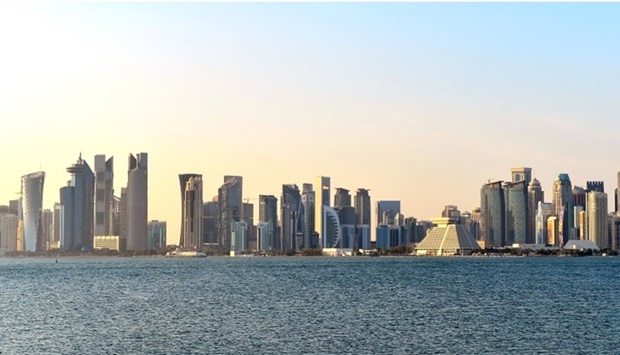Business
Qatar’s inflation to moderate to 2.1% in 2023 from 4.3% this year: Oxford Economics
Qatar’s inflation to moderate to 2.1% in 2023 from 4.3% this year: Oxford Economics
November 05, 2022 | 06:59 PM


Qatar’s inflation will moderate to 2.1% in 2023 from 4.3% this year, researcher Oxford Economics has said in a report.The country’s fiscal balance has been forecast at 9% of GDP this year and 9.3% in 2023 by Oxford Economics.The country’s current account surplus, according to Oxford Economics will be 16.8% of its GDP this year and 14.9% in 2023.Qatar’s real GDP growth has been forecast at 3.6% this year and 3.5% in 2023.GCC central banks hike rates are in line with the US Fed, Oxford Economics said an noted the US Fed hiked its policy rate by 75bps (0.75%) at its latest Federal Open Market Committee (FOMC) meeting. The GCC central banks quickly followed suit – Saudi Arabia, the UAE, Oman, and Bahrain mirrored the rate hike, and their policy rates now stand at 4.5%, 3.9%, 4.5%, and 4.75%, respectively. Qatar has increased their deposit and repo rates by 75bps and lending rate by 50 bps. Higher interest rates will increase borrowing costs, albeit at a slower pace. “GCC countries could see a cumulative increase in interest rates of 425bps in 2022, which will likely weigh on the non-oil GDP of the region. We expect growth in non-oil GDP in the GCC region to be 4.9% in 2022 and then ease to 3.4% in 2023,” Oxford Economics said. In an earlier report, Emirates NBD noted inflation in Qatar has slowed this year but remains high relative to other GCC countries at 4.8% year-on-year (y-o-y) in August. Housing and food inflation has accelerated in recent months but has been offset by lower healthcare and transport costs. Recreation and culture prices have risen sharply however as the sector rebounds from pandemic-era deflation. However, we do expect annual inflation to slow to under 4% by year end, bringing average CPI to 4.5% this year, up from 2.3% in 2021.Money supply growth has accelerated to 12.4% y-o-y in August, the fastest growth since 2018, largely on the back of increased FX deposits. Private sector credit growth has slowed to 6.6% y-o-y in August from a peak of 9.7% y-o-y in February this year. Government and public sector credit growth has declined on an annual basis after double digit growth in 2021, falling to -13.6% y-o-y in August. Qatar’s budget has benefitted from the surge in oil and natural gas prices this year, with oil and gas revenues up 67% y-o-y in H1, 2022. Other revenues have also increased sharply this year, with top line revenue up 58% y-o-y in H1. Expenditure growth has been more restrained at 13% y/y, focused on capital spending projects. Current spending and wages and salaries have increased 11-12% y-o-y in H1, 2022. “We expect the budget surplus to widen to over 10% of GDP this year, rising slightly to 12% of GDP in 2023 on the assumption that oil and gas prices will remain high,” Emirates NBD said.
November 05, 2022 | 06:59 PM
